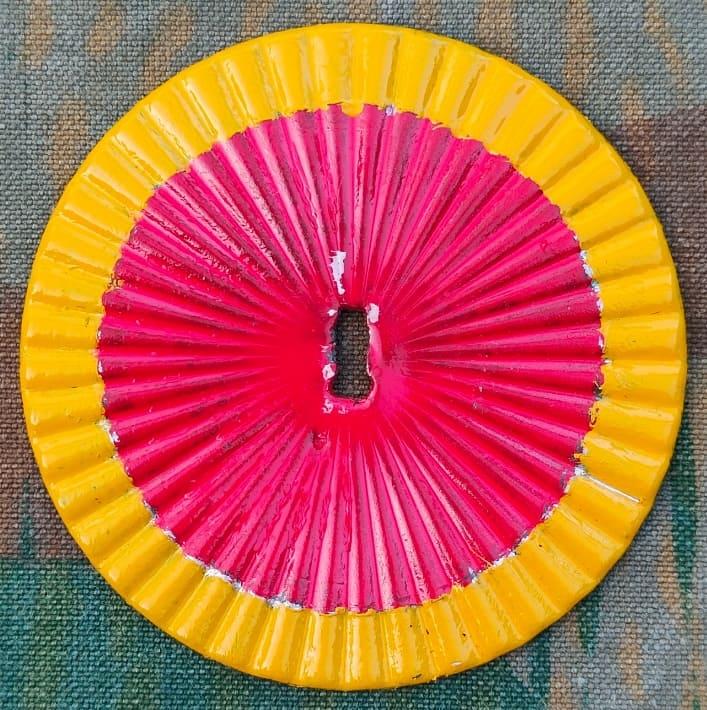 Flagge "Flagge des Kanton Genf" bei fahnenversand.de kaufen.
Flagge "Flagge des Kanton Genf" bei fahnenversand.de kaufen.
 Flagge "Flagge des Kanton Genf" bei fahnenversand.de kaufen.
Flagge "Flagge des Kanton Genf" bei fahnenversand.de kaufen.
Last modified: 2025-03-22 by martin karner
Keywords: switzerland | geneve | geneva | eagle | crown | key | french |
Links: FOTW homepage |
search |
disclaimer and copyright |
write us |
mirrors
Symbolism of the Flag
The eagle symbolises loftiness, justice and protection. The key
symbolises ecclesiastical rule, treasuries, and responsibility. The
arms of Geneva are actually two shields impaled: half the eagle of
the Holy Roman Empire, and one of the two keys of St. Peter (the
"keys of heaven").
T.F. Mills, 5 November 1997
History of the Flag
Geneva is one of the oldest cities in Europe, having been a Celtic
capital before its conquest by the Romans in 121 BC. With the
advent of Christianity, Geneva became an important and powerful
bishopric. St. Peter's Cathedral still dominates the city. After
the fall of Rome, Geneva came first under Frankish control, then
Burgundian, and finally the Holy Roman Empire from which the
city-state gained sovereignty in 1124. Savoy made repeated attempts
to annex the city until 1603 when Bern lifted the last siege. Bern
and Fribourg had been allies of Geneva since 1519, and Zurich formed
a perpetual alliance in 1584, but the Swiss Catholic cantons blocked
Geneva's attempt to become a full-fledged member of the
Confederation. France annexed Geneva in 1793, but it regained its
independence in 1813 and became the 22nd member of the restored Swiss
Confederation in 1815.
The flag of the old bishopric of Geneva consisted of two gold keys on
a red field, the field colour symbolising sovereignty within the Holy
Roman Empire ("Blutbanner"). The earliest known example dates from
1293. In the 15th century the imperial eagle was impaled with the
keys (obscuring one key and half the eagle), thus demonstrating both
the city's imperial freedom and the bishop's sovereignty.
The full coat of arms of Geneva consists of the shield surmounted by
a crest in the form of half a sun inscribed with the initials "J H S"
(Jesus Hominum Salvator), and below a scrolled motto "Post Tenebras
Lux" (after the darkness, light). The sun was a symbol of Geneva
from earliest times, and the motto was added during the Reformation.
The full coat of arms appeared as the central device on Geneva's
flamed war flag of 1815.
With the admission of Geneva in 1815, the modern Swiss Confederation
assumed its current geographical shape, and remained at 22 cantons
(not counting half-cantons) for the next 164 years.
T.F. Mills, 5 November 1997
– One of the earliest known depictions of the Geneva arms, from the Livre des Franchises (1451),
showing an angel holding the Geneva shield, presenting it to the apostles Peter and Paul (the patron saints of Geneva).
The faces were
defaced during the Reformation (source).
– Stained glass plate (1540), two CoA held by bear (representing Bern) and
lion (representing Geneva). This glass painting was made for a private home in Bern; the Bernese
bear (armed with a Swiss dagger) was added as a sign of heraldic courtesy (source).
– Flag of Republic of Geneva (1713, sources: [mue91], [b7b42]).
– Guidon of Genevan artillery (1814, b/w photo, H 42cm, W 47 cm). White cloth, blue ribbon with golden inscription POST
TENEBRAS LUX. Inscription "1814" in gold. Golden fringes. Obverse and reverse identical (source: [b7b42]).
– New Military flag of Geneva canton after its accession to the
Swiss Confederation in 1815 (source: [ges43]). See also photo (flag from 1820, source).
– Stained glass pane (1894). Location: town hall, Geneva (source).
![[Colour Flag GE]](../images/c/ch-ge_56.gif) image
by Ole Andersen
image
by Ole Andersen
Simple rectangular cantonal flag, as shown in Kannik (1956) [So-called
colour flag (Farbenfahne in German), see also postcard from 1928].
Ole Andersen, 4 August 2002
See also: STATE COLOURS in Dictionary of Vexillology
Flaggen, Knatterfahnen and Livery Colours |
![[Knatterfahnen]](../images/c/ch-ge_kf.gif)
|
Flaggen are vertically hoisted from a crossbar in the manner of gonfanon, in ratio of about 2:9, with a swallowtail that indents about 2 units. The chief, or hoist (square part) usually incorporates the design from the coat of arms – not from the flag. The fly part is always divided lengthwise, usually in a bicolour, triband or tricolour pattern (except Schwyz which is monocolour, and Glarus which has four stripes of unequal width). The colours chosen for the fly end are usually the main colours of the coat of arms, but the choice is not always straight forward.
Knatterfahnen are similar to Flaggen, but hoisted from the long side and have no swallow tail. They normally show the national, cantonal or communal flag in their chiefs.
Željko Heimer, 16 July 2000
See also: HANGING FLAG, VERTICALLY HOISTED FLAG, LIVERY COLOURS in Dictionary of Vexillology

 images located by Martin Karner (left) and Pascal Gross
images located by Martin Karner (left) and Pascal GrossAt the beginning of the 20th century, flamed flags were still in use, with the white cross replaced by
a (baroque) shield in the centre of the flag. These decorative flags had been used until WWII and then
somewhat forgotten in preference of the current cantonal flags. [Today they are being produced again,
see right image.]
Pascal Gross, 30 June 2002
See also: • National flag and other cantonal flags with "Early 20th century flag design"
• Modern flamed flags
• FLAMMES in Dictionary of Vexillology
logo.jpg) image located by Martin Karner (8 May 2024)
image located by Martin Karner (8 May 2024) image located by Martin Karner
image located by Martin KarnerCockade for the cantonal troops' headgear (regulation from 1852, size: ca. 40 mm, reverse side).
Martin Karner, 14 March 2025
See also: Cockades (Swiss Army)







